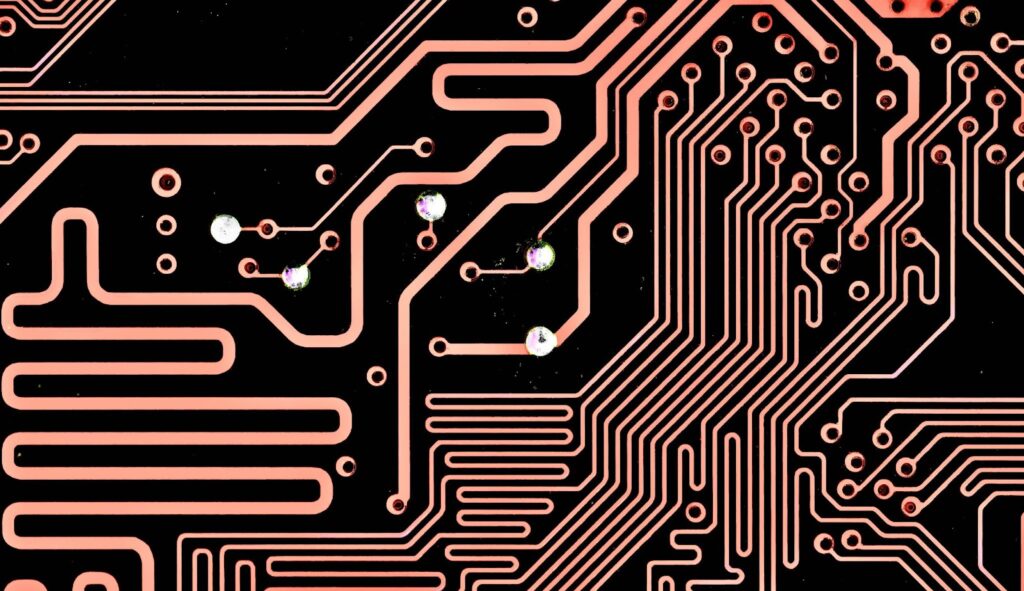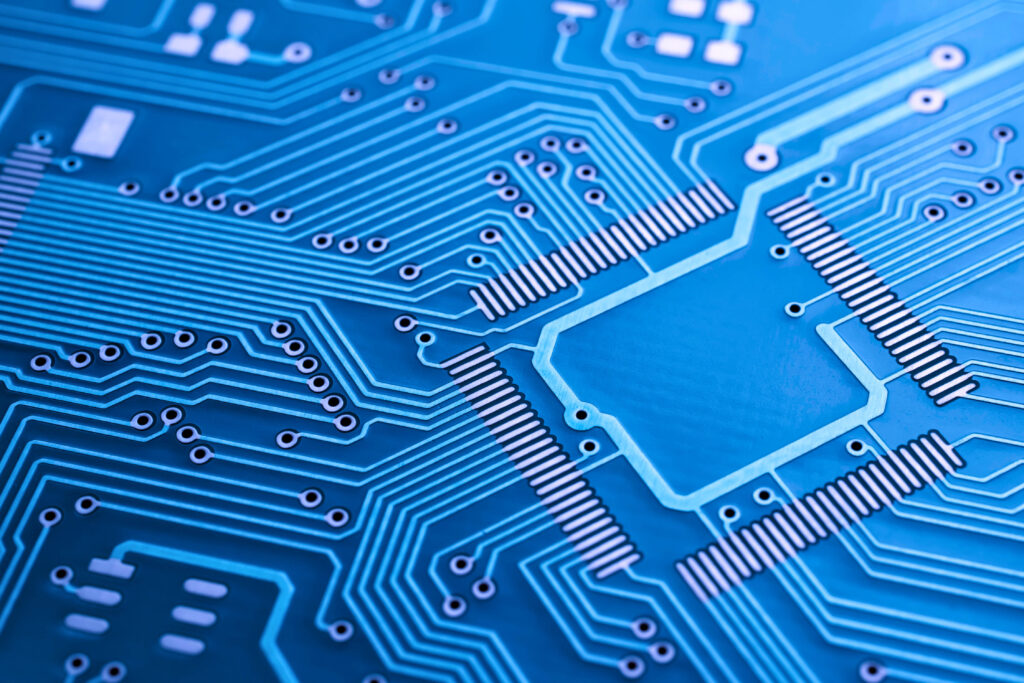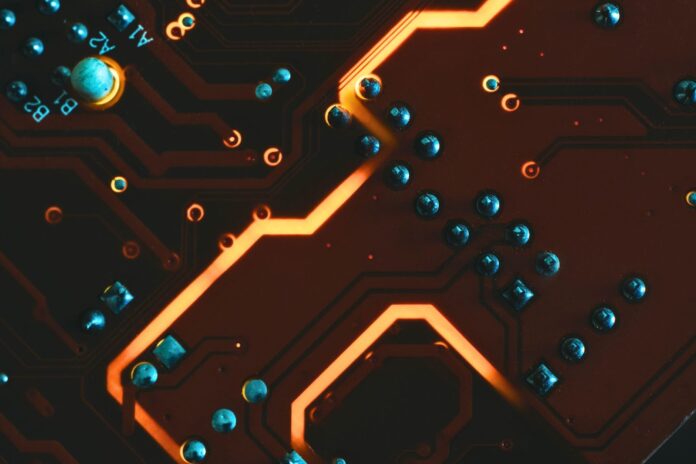Printed Circuit Boards (PCBs) are the foundation of virtually all electronic devices, from household appliances to advanced medical equipment. Integral to a PCB’s performance are the copper traces etched on the board, which carry electrical signals and power between components. Despite their seemingly simple role, these traces are carefully designed to balance efficiency, durability, and performance. This article will explore how PCB circuit traces impact electrical performance, covering essential considerations such as trace width, thickness, impedance, and signal integrity in PCB design.
1. The Role of PCB Circuit Traces
PCB circuit traces are essentially conductive pathways, typically made of copper, that connect various components on a board. They allow for controlled and efficient signal transfer, reducing the complexity and bulk of physical wiring. In digital and analog electronics alike, trace design profoundly impacts the device’s overall electrical performance, influencing factors such as signal transmission speed, integrity, and power efficiency.
2. Trace Width and Thickness: Balancing Conductivity and Heat Dissipation
Trace Width:
The width of a PCB trace determines its resistance and current-carrying capacity. Wider traces have lower resistance, which improves efficiency by reducing energy loss. However, with increased width, more PCB space is consumed, limiting design flexibility. In high-current applications, wider traces are necessary to prevent overheating and signal degradation, whereas narrower traces can be used in low-current applications to save space.
Trace Thickness:
Trace thickness is also critical for managing current flow and minimizing resistance. Thicker traces have a higher current-carrying capacity and dissipate heat more effectively than thinner ones. IPC standards, such as IPC-2221, provide guidelines for determining appropriate trace thickness based on current and temperature rise. For instance, a 1 oz/ft² copper thickness is common, but in high-power applications, 2 oz/ft² or even thicker traces might be required.
Impact on Electrical Performance
Incorrectly dimensioned traces can cause overheating, voltage drops, and potential failure points on the PCB. High-current traces that are too narrow may overheat, resulting in signal integrity issues or even delamination of the trace from the board. By optimizing trace width and thickness, designers can ensure efficient current flow, maintain signal integrity, and enhance the overall reliability of the device.
3. Trace Length and Signal Delay: Ensuring Timely Signal Transmission
The length of a PCB trace is another factor that influences signal speed and integrity. As a signal travels along a trace, it can experience delay, which becomes increasingly significant at high frequencies. For analog signals, a delay might introduce phase shifts, while in digital circuits, it could lead to timing errors.
To mitigate these issues, PCB designers often focus on minimizing the length of traces in high-speed circuits. This practice, known as “trace length matching,” ensures that signals arrive simultaneously at their destination, which is particularly important in data buses, clock signals, and other synchronized pathways.

Impact on Electrical Performance
Longer traces are susceptible to greater resistance, potentially leading to voltage drops. Furthermore, in high-speed circuits, long traces increase the likelihood of interference and crosstalk between adjacent traces. By optimizing trace lengths, designers can reduce these risks, ensuring faster and more reliable signal transmission.
4. Impedance Control: Preserving Signal Integrity in High-Frequency Applications
Impedance is a combination of resistance and reactance, which is crucial in high-frequency PCB designs, where signals are more sensitive to impedance mismatches. Impedance mismatches can cause signal reflections, which lead to interference and data corruption. Controlled impedance, typically implemented in high-speed digital circuits, ensures that the trace maintains a consistent impedance value throughout its length.
Achieving controlled impedance involves selecting appropriate trace width, thickness, and spacing relative to the ground plane. PCB design software often includes impedance calculation tools that account for these factors, allowing designers to achieve the necessary impedance for each trace.
Impact on Electrical Performance
Impedance mismatches can result in signal degradation, which becomes increasingly problematic in applications such as telecommunications, data processing, and other high-frequency domains. By maintaining consistent impedance, designers can minimize reflections, preserving signal integrity and ensuring efficient communication between components.
5. Crosstalk and Electromagnetic Interference (EMI): Reducing Noise and Ensuring Signal Clarity
In densely packed PCBs, traces running parallel or near one another can introduce unwanted noise, known as crosstalk. This phenomenon occurs when the electromagnetic field from one trace induces a signal in an adjacent trace, potentially distorting the signal. Crosstalk is particularly problematic in high-speed and high-frequency circuits, where even minor signal interference can cause errors.
To minimize crosstalk, designers often space traces farther apart or introduce ground planes between layers. Shielding techniques, such as incorporating guard traces (extra traces placed next to sensitive lines), can also reduce EMI.
Impact on Electrical Performance
Crosstalk and EMI can corrupt data transmission, leading to errors or even device malfunction. By carefully planning trace layout and incorporating shielding techniques, designers can reduce noise, improving the device’s signal integrity and reliability.
6. PCB Trace Geometry: The Influence of Layout on Performance
The geometry of PCB traces, including bends, corners, and turns, also plays a role in electrical performance. For example, right-angle turns (90-degree bends) can cause impedance discontinuities, leading to reflections and EMI issues. Rounded or mitered angles are preferred for high-frequency traces, as they reduce abrupt changes in impedance and minimize potential reflections.
Furthermore, the use of differential pairs (two closely spaced traces carrying complementary signals) is common in high-speed applications. Differential pairs help reduce noise susceptibility and improve signal integrity by canceling out interference.
Impact on Electrical Performance
Poorly designed trace geometry can lead to signal degradation and increased EMI, affecting the performance of high-frequency circuits. By optimizing trace angles and using differential pairs, designers can enhance signal integrity and reduce noise-related issues.
7. Signal Return Path and Ground Plane Design: Essential for Noise Reduction and Stability
Every signal on a PCB requires a return path, usually through the ground plane, which provides a low-impedance path for currents. The signal return path should be as close as possible to the trace to minimize loop area, which helps in reducing EMI and maintaining signal integrity. Ground planes also act as a shield, protecting sensitive traces from external interference.
When a PCB trace lacks a clear return path, or if it crosses gaps in the ground plane, it can introduce impedance discontinuities and increase the risk of EMI. Additionally, the absence of a nearby ground plane can lead to longer return paths, creating larger loops that are more susceptible to noise.
Impact on Electrical Performance
An optimized ground plane and careful planning of signal return paths are vital for noise reduction and stability. These design elements are especially crucial in high-speed circuits, where a poor ground plane can significantly degrade signal integrity and lead to erratic device behavior.
8. Environmental Factors: Temperature, Humidity, and External Interference
Environmental conditions, including temperature and humidity, can also influence the performance of PCB traces. Elevated temperatures increase trace resistance, which can lead to signal loss and reduced efficiency. Additionally, humidity can create conductive paths between traces, potentially causing short circuits and degradation over time.
To combat these issues, designers may select materials with high thermal conductivity and employ design practices that optimize heat dissipation. For example, thicker copper layers and wider traces help reduce the risk of overheating. Additionally, protective coatings, such as conformal coatings, can shield the traces from moisture, improving the longevity and reliability of the PCB.
Impact on Electrical Performance
Environmental factors can lead to a gradual decline in PCB performance, especially in harsh conditions. By accounting for these factors in the design stage, designers can enhance the board’s durability and maintain optimal performance under various operating conditions.
9. Simulation and Testing: Ensuring Optimal Trace Performance Before Production
Simulation tools, such as SPICE and PCB layout software with signal integrity analysis, allow designers to model and evaluate trace performance before manufacturing the PCB. These tools help detect issues related to impedance, crosstalk, and signal timing, providing an opportunity to make adjustments before production.

Testing, including impedance testing, continuity testing, and thermal analysis, is also crucial after manufacturing to verify that the PCB performs as expected. By combining simulation with testing, designers can ensure that the traces are optimized for reliable and efficient performance.
Impact on Electrical Performance
Simulation and testing enable designers to predict and address potential issues that may impact electrical performance. Through careful analysis and verification, designers can reduce the likelihood of costly revisions and ensure that the PCB performs optimally in its intended application.
Conclusion
PCB circuit traces play a vital role in determining a device’s electrical performance, impacting everything from current flow and heat dissipation to signal integrity and noise immunity. By carefully optimizing trace width, length, impedance, and layout, designers can enhance the reliability and efficiency of the PCB. Additionally, considering environmental factors and leveraging simulation tools allows for further improvements, ensuring that the final product meets the highest standards of performance and durability. As electronics continue to evolve, attention to trace design will remain essential for achieving optimal performance in increasingly complex circuits.
